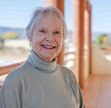Amber Polo's Blog, page 14
March 7, 2012
Debra Kayn's Cowboys
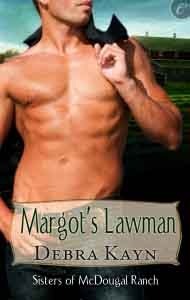 One of the best pieces of advice an editor gave me when I first started writing was to write what you know. Not only will the story come to you easier, but your readers will believe your story.
One of the best pieces of advice an editor gave me when I first started writing was to write what you know. Not only will the story come to you easier, but your readers will believe your story.Writing about cowboys, country living, and about the working man is part of my life. It’s the people I know, the community I live in, and the people in my family.
Most of all, I like to write about cowboys. What other kind of man can pluck you out of the store, haul you over their shoulder, and disappear from sight without having the police called? This same man who’ll tell you exactly what he means in the roughest language, and bring you a handful of daisy’s an hour later. He’s tough enough to dominate the rankest bull, and tender enough to cup his newborn niece in the palm of his hands. He’s dependable and rough around the edges, but when he falls in love…he falls hard.Not to mention, boots, Levi’s, and a cowboy hat. He doesn’t need pretty words. One look, and you know exactly what he wants.
If you were asked to write about the kind of men you know, how would you describe them?
Margot’s LawmanBuy Link
It's hard to keep a secret in the small town of Pike, Montana, but veterinarian Margot McDougal and sheriff Roy Lee Hanson managed to keep their relationship on the sly for months. Margot cares for Roy Lee, but the last thing she needs is to worry about local gossip while she's busy running her clinic and dealing with the loss of her beloved father.
Roy Lee can't wait to tell the world that he loves Margot. He respected her decision to keep their affair quiet—until now. It's time for everyone to know Margot is his gal...especially Ryan Martin, her new assistant. He's formed an attachment to Margot and Roy Lee is sure the city boy's unexplained appearance in Pike means he's up to no good.
Margot just wants to help Ryan fit in, and Roy Lee's jealousy soon drives a wedge between them. A wedge that only increases when Margot is roped into Ryan's secret, too...
Multi-published romance author Debra Kayn lives in the beautiful Coastal Mountains of Oregon on a hobby farm. Her love of animals includes dogs, chickens, goats, rabbits, turkeys, geese, and yes...pigs. The peacefulness of a flowing creek across her property provides an excellent spot to read a book on a summer day, go swimming, and catch the ever-elusive fish using a pink sparkly fishing pole. Meeting her husband on a blind date in her teens made her a true believer in love and romance, and she can promise you that all her books will have a happily-ever-after.
Visit Debra’s websiteFollow Debra on TwitterLike Debra on Facebook
Published on March 07, 2012 00:00
February 26, 2012
Writer's Butt - Part 1 (Plus Smashwords Discount Code)
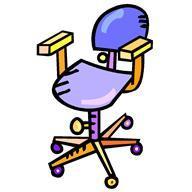
Do you have Writer’s Butt?
Sitting too long on a regular basis creates more than completed manuscripts.
Doing yoga never got me that mythical "yoga butt," but "writer’s butt" definably crept up on me. During the time I was writing Relaxing the Writer I dealt with a sore hip and researched several therapies and therapists and tried a few “props” and techniques.
The "Writer’s Butt” series will first look at the problem and then ways to
make the problem smaller.
Writer's Butt - Part 1
Before the internet, writing included a lot more physical tasks. Writers walked to a stationery shop for paper and ink or a few blocks to a library, drove or took a bus or subway to a large research library, or traveled to a distant city to peruse specialized collections and conduct interviews.
In libraries the writer pulled open card catalog drawers and flexed fingers through the cards, hiked through miles of stacks, stretched up or squatted down, then lifted and carried twenty-pound tomes to a carrel.
Some writers still do old-fashioned tasks, but many more turn on computers to find research materials in London or Tokyo. Others use Wikipedia as their all-night convenience store.
The scariest fact I found in my research was a 2010 study by the American Cancer Society which lumped writers with obsessive TV watchers in the field of “inactivity studies” concerned with health, longevity, and obesity. The study found that sitting time was independently associated with mortality, regardless of physical activity.
Todd Sinett, author of The Truth About Back Pain, says sitting not only lessens blood flow to the discs that cushion your spine (wearing them out and stressing your back), but puts 30% more pressure on the spine than standing or walking. 80% of Americans suffer from back pain at some point in their lives. If you don’t already have issues, you need preventative measures.
If that’s not enough, a 2011 study in the American Journal of Epidemiology reported that people who spent a decade or more doing sedentary work were almost twice as likely to develop cancer of the lower colon compared to those with physically active jobs, regardless of all recreational physical activities. Inactivity also may encourage tumor growth due to inflammation.
What’s a writer to do when hours at a gym or track cannot make up for time spent sitting at a desk?
Basic tips:
Take breaks
Stand up frequently
Move around
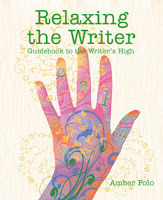 Excerpt from Relaxing the Writer
Excerpt from Relaxing the Writer
Chapter 2 The Ergonomic Writer
Recent Articles:"To Decrease Cancer Risk, Stand Up" by Sophie Quinton in the National Journal (November 3, 2011)
"Weaving Actitivy into Your Work Day Important to Maintain Good Health,"James Levine, M.D. PhD, Endocrinology Mayo Clinic in Mayo Clinic Medical Edge Newspaper (November 4, 2011)
Smashwords February Discount 29% Relaxing the Writer: Guidebook to the Writer's High ebook! Use this Smashwords code: JL48Nthrough February 29thRather have the print edition Amazon Barnes and Noble Or read on your Kindle Relaxing the Writer the perfect gift for
your favorite writer
or yourself
Published on February 26, 2012 08:14
February 13, 2012
Love to Write? 29% Discount on Relaxing
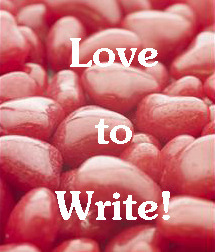
Smashwords February Discount 29% Relaxing the Writer: Guidebook to the Writer's High ebook!
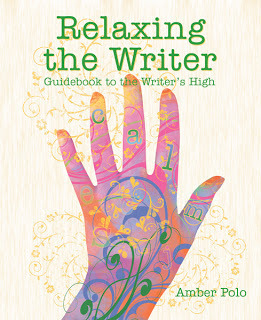
Use this Smashwords code: JL48Nthrough February 29th
Rather have the print edition Amazon Barnes and Noble
Or read on your Kindle
Relaxing the Writer the perfect gift for your favorite writer or yourself
Relaxing the Writer: Guidebook to the Writer's High by Amber Polo provides a
a travelogue of hints, exercises, and whimsical side trips to help the stressed writer breakthrough the physical and mental limits to creativity.
From aromatherapy to zumba, find hundreds of practical ideas and suggestions. Written with the special needs of writers in mind, anyone who spends time in a chair will discover useful tips to escape the dangers of sitting.
Suggestions range from centuries-old techniques like meditation and yoga to iPad apps. Browse a smorgasbord of suggestions. Every page inspires worried writers to explore new ideas to de-stress their lives.
For a special treat -Try the audio that teaches you how to relaxRelaxing the Writer Relaxation CD & MP3 download
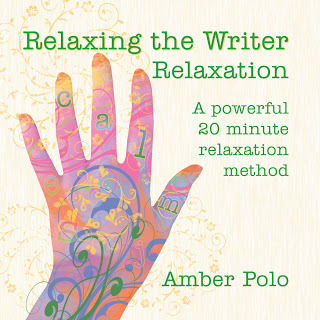 Writers, computer users, and anyone whose body and mind slip into stress
Writers, computer users, and anyone whose body and mind slip into stress needs to try this.
For many people, relaxation is the most needed and often the most difficult
skill to learn. Here's a proven method to teach anyone to recognize tension
-- and let it go.
Throughout Relaxing the Writer Relaxation, Amber's voice provides cues for
breathing, tensing and releasing, and witnessing your body, guiding you
along every step to release tension.
Although not hypnosis, you may experience a dreamlike state disconnected
from your mind and body. In this state creative answers and ideas emerge
more easily. After using the audio for a while: Your breathing changes. Your
body slows. You awake completely relaxed.
Published on February 13, 2012 11:28
February 11, 2012
Love, Serendipity, and Chocolate
 Love, Serendipity, and Chocolate by Amber Polo
Love, Serendipity, and Chocolate by Amber Polo
Indulge me as a republish my annual Valentines Day post.
Once upon a time in1994. I was the marketing manager for a Boston conference taping company and my boss’s Polish wife decided to throw a party. Registered for a weekend regional Mensa conference at a hotel west of Boston, I was more interested in getting away from my co-workers than socializing with them. But, when your boss has a party, you go, even if the weather is awful and you know traffic to the west suburbs will be hell.
So I ate Jolanta’s thick potato soup and dark bread and waited for the earliest polite moment to leave. At last, blocking the door, she told me I must take sweet treats with me. I opened my briefcase and she dropped in a handful of candy. I smiled and ran down the steps to head into Friday rush hour traffic.
At the hotel Regional Gathering on Friday evening I met old friends. On Saturday morning I had my first ever tarot card reading. Still trying to make sense of the intricate cards, I walked into the Clear Thinking Workshop. I was not particularly interested in thinking; Thinking meant questions and I wanted answers. What did the future hold for me, my career, my fortune, and, most of all, my love life? Was it too much to hope to meet the love of my life? And soon?
Sitting next to me, with obviously a more serious interest in clear thinking, was Vince Polo, an attractive, age-appropriate man from Maryland with a big smile. Vince and I left the workshop and over the next six hours drank a lot of coffee, discussed our lives, and shared personal stories and feelings. Vince’s intelligence, sense of humor, good looks, honesty, and his intense interest in me were irresistible. He stayed for the evening banquet, returned for sessions on Sunday and decided to stay in Boston for another day so we could have dinner on Monday evening.
Sunday night, as I was unpacking my weekend luggage, I up-ended my bag and out fell two “Prince Polo Krunche wafel z kremem Kakawym oblewane naturalna Czekolada” candy bars in gold foil wrappers.
Had I found my prince?
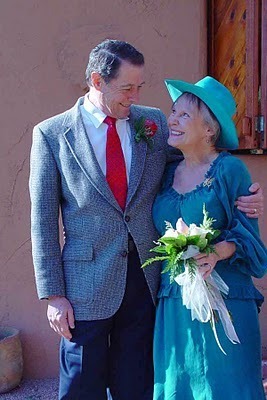
Here's a photo from our Arizona wedding!
A Polish deli near Sedona’s Well Red Coyote bookstore stocks Prince Polo chocolate-covered wafer candy bars. And like all the Polish people I've questioned, the deli owners agree the candy bars have been around forever and the name has no significance.
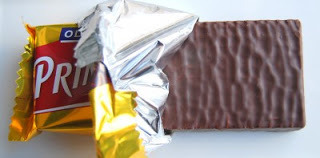
See what Wikipedia says
Relaxing the WriterGuidebook to the Writer's HighSmashwords February Discount 29% Relaxing the Writer: Guidebook to the Writer's High ebook! Use this Smashwords code: JL48Nthrough February 29thRather have the print edition Amazon Barnes and Noble Or read on your Kindle Relaxing the Writer the perfect gift for your favorite writer or yourself
Published on February 11, 2012 17:58
February 8, 2012
Yoga as the Writer's Muse - Jeffrey Davis Part 2

Amber: I'm back with Part 2 discussing the benefits for writers from Jeffrey Davis's Yoga as Muse.
Jeffrey: The first section of my book Journey from the Center to the Page introduces readers to what I call The Four Preparations:Write with intention Show up and shape time Stoke the writer's fire Ride the wave of concentration The second second section helps writers learn to pay attention to different creative faculties - imagination, deep memory, intuition - in tandem with very specific facets of craft - imagery and detail, syntax, metaphor, dialog. I hope that writers experience craft in a whole new context.The third chapter consider emotional crags - writing the truth, dealing with the inner heckler, writing beyond trauma.And the fourth section addresses a variety of issues from revising to forming writers' groups to teaching Yoga as Muse in the academy to engaging Yoga As Muse for artists and dancers. Each chapter acts like a sort of shapely essay (I hope) that interweaves a topic relevant to a writer with clear examples from writers as and specific yogic tools and philosophies. Several chapters include specific exercises that help writers begin the practice.
Amber: Can you learn this practice from a book?Jeffrey: Although I had doubts, several writers email me from around the world to tell me how the book works for them. A writer last week emailed me to say that the book helped her finish her first novel. That's rewarding to me.
Yoga As Muse specifically is a way to help writers and artists become aware of their embodied mind's nuances so they can become their own muses. They don't have to wait for some mysterious muse to show up each blue moon wearing angel wings and blowing a golden trumpet. Those inspired moments - like a Miles Davis impromptu solo - require a lot of practice. Yoga As Muse offers that practice.
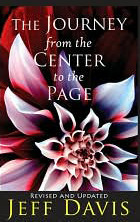 Amber: Tell me about the Yoga as Muse workshops and e-courses.
Amber: Tell me about the Yoga as Muse workshops and e-courses.Jeffrey: The workshops and retreats immerse writers in this work. They typically focus on a specific theme relevant to writers (and sometimes artists) such as compassion or truth. I always ground the workshops and retreats in readings from contemporary writers. It's crucial for writers to read and to learn to read as writers (that's my old teacher talking, but it's true).In the mornings, we practice yoga and also have Yoga As Muse sessions that generate new writing from the yoga. In the afternoons, we share our writings and discuss facets of craft. We usually conclude with a celebratory reading by the participants. What's beautiful about these events is that inevitably first-timers arrive with some secret trepidation: Is my writing good enough? Do I belong here? I'm no good at yoga. Usually, that stuff gets dispelled within the first 15 minutes.
Every one - including me - is a beginner who learns from everyone else present. Aspiring writers and writers who have published multiple books attend and support each other. Non-yogis and yoga teachers alike show up.
The YAM e-courses are really exciting. Writers from around the world can take these courses without leaving their bedroom or living room or wherever their computer is. Each week participants receive an e-lecture that focuses around one facet of Yoga As Muse and includes at least one sometimes multiple exercises. Then, participants correspond via a message board set up exclusively for participants. There, they share their experiences with Yoga As Muse, post their writings, and give each other specific feedback. It's a great way to build virtual communities.
Amber: What's coming up?
Jeff: People have asked me to offer Yoga As Muse Facilitator Training for years. I love to teach teachers, and I love to help people become the absolute most powerful teacher they can become. This training is not a yoga teacher training. Instead, it helps people (who must be certified to teach yoga) become a facilitator of their own Yoga As Muse classes and workshops. It's going to be amazing, if I do say so myself, with an intense immersion, an extension program, and (for graduates) a nine-month Facilitator Support Network that will give graduates support in taking the training to their communities, studios, and writing centers.
Thanks Jeff, for offering your work to writers. I am excited that you have decided to share this work through e-courses. I hope writers all over the world will benefit by bringing yoga into their writing and taking their writing to the mat. Namaste.
Join Jeffrey for
YogaAs Muse for Creative Flow Webinar Don't wait for inspiration. Show up for it. Thursday, February 9, 2012
8:30 - 9:30 EST, 5:30-6:30 PST
Thecreative mind is fickle. Sometimes it sparks; sometimes it's just dark. Youcannot exactly "control" that wild mystery box (who would want to?).Butflourishing creatives and creative professionals do know they don't haveto be at their muse's whim. They know how to do what you can do: Set theconditions, cultivate the habits, and engage the tools that let themthrive, follow through, and finish creative projects with more depth andconsistency.Enter YOGA AS MUSE™. It's no panacea. But YOGA AS MUSE doestrain creatives, creative professionals, freelancers, and other audiencesto become more aware of how their creative minds work optimally.YOGA AS MUSE'seasy-to-apply, integrated system of tools can increase your focus, heightenyour imagination, sharpen your mental awareness, shift tired patterns ofthinking and inaction, and stoke you to act upon fresh ideas. Learnmore by reading the full description and register here.
Published on February 08, 2012 08:48
February 3, 2012
Yoga as the Writer's Muse - Jeffrey Davis Part 1
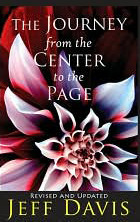
Welcome, Jeffrey Davis, author, TIFERET Fiction Editor, yogi, and creativity consultant,
Amber: How would a writer benefit from bringing yoga into her or his life?
Jeffrey: Yoga brings a clear mind that becomes aware of itself. It instills that luxurious immersion, that deep concentration all artists and writers need and yearn for. It awakens what I call the felt mind - this is a term I've just stumbled upon in my own journaling and is not something I've written about yet except in a Yoga As Muse e-course . I distinguish the felt mind from the processor mind.
Let me digress a moment because this point is essential, I think. The processor mind wants to explain and analyze and compute and calculate and, frankly, conclude and wrap stories and poems and essays up before my fingers have even completed a page of writing. The felt mind slows down. I'm not a fan of automatic or quick writing or free writing, by the way. I'm a fan of slow writing, of a process that is so deeply felt that while writing your inner ears can hear the textures of words and your inner fingers can feel the textures of words. The felt mind feels. The processor mind is made of steel and sky. The felt mind is made of silk and sinew, of felt and grit. It mind wrapped in earth.
Several yoga practices quiet the processor mind. (Neuroscience has an explanation for this phenomenon, too.) And several yoga practices awaken the felt mind.
Yoga As Muse specifically is a way to help writers and artists become aware of their embodied mind's nuances so they can become their own muses. They don't have to wait for some mysterious muse to show up each blue moon wearing angel wings and blowing a golden trumpet. Those inspired moments - like a Miles Davis impromptu solo - require a lot of practice.
Yoga As Muse offers that practice.
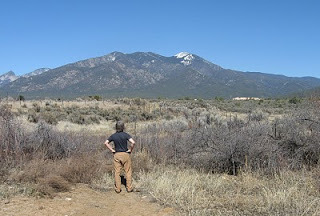
Join author, TIFERET Fiction Editor, yogi, and creativity consultant JEFFREY DAVIS as he shares with you key insights and tested tools to deepen your relationship with your own creative mind.
In Part 2 Jeff will talk more about his book, workshops, and Yoga as Muse
Join Jeffrey for
YogaAs Muse for Creative Flow Webinar
Don't wait for inspiration. Show up for it.
Thursday, February 9, 2012
8:30 - 9:30 EST, 5:30-6:30 PST
Thecreative mind is fickle. Sometimes it sparks; sometimes it's just dark. Youcannot exactly "control" that wild mystery box (who would want to?).Butflourishing creatives and creative professionals do know they don't haveto be at their muse's whim.
They know how to do what you can do: Set theconditions, cultivate the habits, and engage the tools that let themthrive, follow through, and finish creative projects with more depth andconsistency.Enter YOGA AS MUSE™.
It's no panacea. But YOGA AS MUSE doestrain creatives, creative professionals, freelancers, and other audiencesto become more aware of how their creative minds work optimally.YOGA AS MUSE'seasy-to-apply, integrated system of tools can increase your focus, heightenyour imagination, sharpen your mental awareness, shift tired patterns ofthinking and inaction, and stoke you to act upon fresh ideas.
Learnmore by reading the full description and register here.
Published on February 03, 2012 01:00
February 2, 2012
Welcome Mike Bove, mystery writer and golfer!Amber: What ...
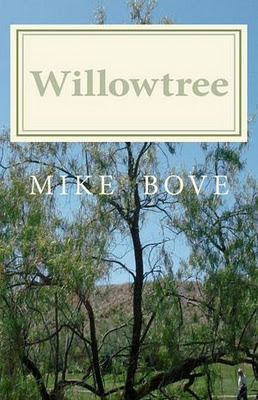
Welcome Mike Bove, mystery writer and golfer!Amber: What keeps you a relaxed creative writer? Or brings you back when stress takes over?
Mike: In order to really get into a writing session I need to have my head clear. To keep my mind from wandering, impending chores or responsibilities must be taken care of first. I am most relaxed in the morning. I am ready to write after a shower, coffee, and the newspaper. Later in the day I am most likely to have a good session after fifteen minutes in the hot-tub, especially if a round of golf or yard work preceded it. That fifteen minutes usually includes breathing exercises and thoughts of what's next in the manuscript. I don't think I get overly stressed about most situations. Take it as it comes, do what you are able, move on.
Amber: How does golf relax you? Using the categories in "Relaxing the Writer" would you call golf meditative, active, or sensual/artistic for you?
Mike: If you ask me questions like this about golf, you might get a new book from me. Golf can be relaxing and it can be very stressful. The whole point to playing golf is twofold. One, relax and have fun. Two, the stressful part, it's a competition (against yourself or someone else) so you are trying to achieve the best score. Without one, two is impossible. I have learned over many years in the game that relaxing, physically and mentally is vital to scoring well. How? Be positive, never entertain negative thoughts.
Sometimes (many times) a shot doesn't happen as I pictured it. I try to go right on to planning the next shot after a bad one. A French word may be uttered, but that's it, it's over.
I'm in a beautiful place out in the fresh air, feeling the sun and breeze, playing a game with friends. I see and smell acres of manicured green grass, there are lots of trees, a pond, birds and rabbits. So I relax, it's easy. Thoughts seldom wander to health, finances, writing, or the broken water pipe at home. Maybe I play golf because it is relaxing.
 For me, I think golf would fit into all of the categories in Relaxing The Writer. I will do brief breathing exercises at certain times to help focus on a shot. It is certainly both a physical activity requiring some skill, and and an exercise for the mind in choosing the correct club and action for each shot.
For me, I think golf would fit into all of the categories in Relaxing The Writer. I will do brief breathing exercises at certain times to help focus on a shot. It is certainly both a physical activity requiring some skill, and and an exercise for the mind in choosing the correct club and action for each shot. Amber: How has golf influenced your writing?
Mike: style, came naturally, I think, from being immersed for so long in the golf culture. Conversations, settings, activity, and people on and around the course all provide ideas in developing characters and a story. I am really comfortable when in the whole golf atmosphere. I am much more outgoing there than in most other social situations. I guess I am very relaxed there. And, as you surely know, being relaxed can help a great deal when writing.
Amber: Since fiction (even cozy mysteries) is filled with conflict, what do your characters do to release stress?
Mike: Some do the normal things like yelling, joking, smoking weed. In the next book Bruce uses the hot-tub a lot. He will bake some bread or walk his dog, or go out to eat.
An excerpt from Willowtree:
Keely sat at my feet with her hedge hog “baby” in the living room while I tried to line up the facts that I learned from Holton, Ben, and Mrs.R. during the past day and a half. Actually they didn't mean a lot, just facts, things we knew. But strung together, these facts all bothered me. Calvin dead, Martin dead, both near the ranch. Bob, or Squeek supposedly weird, Vernon, Doc’s buddy, long gone. Miggy-Mike. Maybe all unrelated, maybe not.To stop the race of Persistent Automatic Thoughts from taking over, I decided to bake the bread. That was one, golf was another, activity that kept PATS away. I formed the round loaves and placed them on cornmeal sprinkled on pie plates. My invention, at least I never heard of anyone baking bread in pie plates. I reasoned that the heat from the sloping, round walls of the pie plate made the finished loaf perfectly round. They sat, rising, under a clean towel for over an hour while I checked my email. I signed in on the Golf Association website and got my handicap info up to date.The three dough balls were becoming bread in the hot oven when Genny came into the aroma filled kitchen. She said that it reminded her of the wonderful smell outside the bakery she passed while walking to school. Genny had a good day at the nursing home. She said she enjoyed working there. It was nice to have her home for a quiet evening. Genny was another thing that kept PATS away. With her, all of my attention was hers. I loved her so much. Away from her, many PATS were about her.We enjoyed a gigantic salad she made with fresh veggies she picked up at a Sedona farmers market on the way home. Also a whole loaf of warm bread.
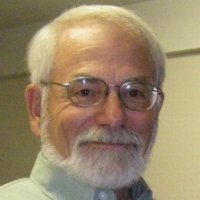 "Willowtree A Bruce DelReno Mystery" is Mike Bove's mystery celebrating his love of golf and the retired life in Arizona. Mike grew up in Vermont. He wrote articles and drew cartoons for his college newspaper. Mike was involved as an actor and director in high school, college and community theater. He adapted a Russian folk tale, The Nosebag, for the stage, produced and directed it. He was a public school teacher, track, and soccer coach before moving to Cape Cod. There he became an avid fisherman and golfer. He joined the Postal Service, transferred to Sedona, retiring in 2010.
"Willowtree A Bruce DelReno Mystery" is Mike Bove's mystery celebrating his love of golf and the retired life in Arizona. Mike grew up in Vermont. He wrote articles and drew cartoons for his college newspaper. Mike was involved as an actor and director in high school, college and community theater. He adapted a Russian folk tale, The Nosebag, for the stage, produced and directed it. He was a public school teacher, track, and soccer coach before moving to Cape Cod. There he became an avid fisherman and golfer. He joined the Postal Service, transferred to Sedona, retiring in 2010."Willowtree" Is Mike's first novel in the Bruce DelReno Mystery Series. He lives in Cottonwood, AZ with wife, Jane, and Golden Retriever, Ceile.
Learn more about Mike and Willowtree
His website His blog Amazon (print and Kindle)
Barnes and Noble Smashwords
Published on February 02, 2012 23:30
January 31, 2012
Why I Write Fantasy - James Hutchings
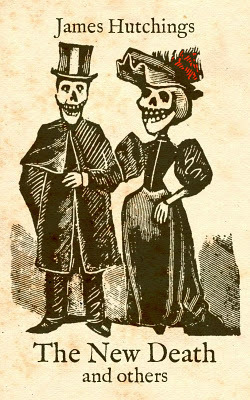 Welcome James Amber: Why do you write fantasy?
Welcome James Amber: Why do you write fantasy?James: I like the fact that you can have a striking idea and have it in the story in its most direct form. You don't have to justify why the trees in the forest actively want to make people get lost, they just do, and the power of it is that other people have had a similar thought and recognize it.
Amber: Why dark fantasy?James: What I mean by 'dark fantasy' is that I'm trying to break away from the very narrow idea of fantasy that some people have: huge books, probably a series of huge books, set in an imaginary, medieval-like world (maps of which are at the front), in which a humble hero gets caught up in a battle for the fate of that world...all very much based on the template set down by Lord of the Rings, perhaps as interpreted by games like Dungeons and Dragons and World of Warcraft. I like Tolkien, but he's overshadowed a lot of other ways of writing fantasy which I think are just as interesting, and which have influenced "The New Death and others."
Amber: What are your favorite fantasy novels?
James: I like short stories a lot more than novels. But probably The Hobbit.
Amber: Why do readers love fantasy?
James: Why I love fantasy seems to be quite different to why a lot of other people love it.
A lot of fantasy now days seems to be 'fantasy for people that hate fantasy'. For example it seems to me that Twilight would have almost exactly the same story if the Cullens were car thieves instead of vampires (in the movie he's even looks like a sort of 50s hoodlum). So in that case maybe it's a sort of stand-in for the real thing - like a story about going out with a car thief is too confronting, but having it be about vampires makes it just pretend?
Likewise all those stories about court politics and/or romantic entanglements in an imaginary kingdom. If that's what you're interested in, why not read or write historical novels?
Amber: Would you write fantasy even if no one read it?
James: Definitely not. I write to be published. But having said that, I can't imagine no one reading fantasy. Even if there was no genre of fantasy (and there wasn't until relatively recently), the actual story elements would still be there.
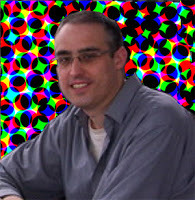 James Hutchings lives in Melbourne, Australia. He fights crime as Poetic Justice, but his day job is acting. You might know him by his stage-name 'Brad Pitt.' He specializes in short fantasy fiction. His work has appeared in Daily Science Fiction, fiction365 and Enchanted Conversation among other markets. His ebook collection The New Death and others, is now available from Amazon, Smashwords and Barnes & Noble. He blogs daily at Teleleli.
James Hutchings lives in Melbourne, Australia. He fights crime as Poetic Justice, but his day job is acting. You might know him by his stage-name 'Brad Pitt.' He specializes in short fantasy fiction. His work has appeared in Daily Science Fiction, fiction365 and Enchanted Conversation among other markets. His ebook collection The New Death and others, is now available from Amazon, Smashwords and Barnes & Noble. He blogs daily at Teleleli.The New Death and Others Death gets a roommate...
An electronic Pope faces a difficult theological question...
A wicked vizier makes a terrible bargain...
44 stories. 19 poems. No sparkly vampires. There's a thin line between genius and insanity, and James Hutchings has just crossed it - but from which direction?
Published on January 31, 2012 23:30
January 30, 2012
Why I Write Fantasy - Ariana and Mythpunk
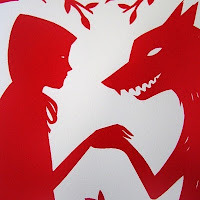 Why I Write Fantasy by Ariana and Mythpunk
Why I Write Fantasy by Ariana and Mythpunk Yesterday I visited my thesis supervisor. We chatted for a little while about writing and my plans for grad school, and some of my faculty's upcoming writing contests. He asked me if I've written about "anything that could possibly happen to someone living here in this city." I thought for a moment, and then I said no.
He chuckled a little, and then he asked, "What started your love affair with fantasy?"
I thought about it for a second, and then I told him a few stories.
When I was a little girl, just four or five years old, I never played with Barbies or dolls. I had a variety of plastic animal figurines, and I'd spend all of my time outside, playing with them in the grass and dirt. I was a bit of an animal geek, and spent all my time reading animal encyclopedias. I was fascinated by what I read. There was never enough information for me.
My favourite animals, though, were wolves, bats, rats, lions, and poison dart frogs. When I would go to sleep at night, I'd sleep with a black plastic rat and a plastic bat, both of which squeaked, and had red eyes.
"You could be a witch," my supervisor said.
Then I told him this story.
When I was six, I wanted a pair of antlers. Not fake antlers. Real deer antlers. I needed them. To be honest, I am not sure why I wanted them so badly. But it was a deep, visceral need in me. I wasn't quite happy with being human. My dearest wish was to be a wolf. But deer antlers would have to do in the meantime.
Well, I got them for Christmas. Real deer antlers, two lovely spikes with three tines on each, jutting up from a small triangle of skull. That cemented my belief in Santa for several more years. I would hold them to my head rapturously and gaze in the mirror, imagining having them for real. It was only a few years ago that I learned how I got them.
My parents went to my grade one teacher, saying, "Help us, Ariana wants deer antlers in the worst way, we don't know what to do, our daughter is really weird."
And my teacher's brother was a hunter, and she got him to save the antlers from the next deer he killed for me. He cleaned them up and sent them to my parents. Reason #295 why my parents are amazing.
Of course, I am not mentioning how much I loved fairy tales and mythology as a kid. I had a book of Greek myths, countless fairy tale anthologies and stand-alone stories, and an endless amount of imagination. In my mind, animals always talked, and the wind was a goading force that tempted me away from home, and I'd kiss trees affectionately because I was happy they were alive. I was happiest when I imagined I was flying, a Swan Maiden, part-cat, part-wolf, magical, a Faerie, transformative.
I've never been satisfied with reality.
As I got older, and Pretend wasn't always a viable game, I read more and more. My favourites? The Golden Compass, The Sight, Harry Potter. They opened up my mind to even more possibilities. They were my games of pretend come to spectacular, beyond-my-imagination life.
Even now, I find it hard to describe what my mind is like. It's full of stories, and wishes, and garnets and grease and cinquefoil and tea and silk and shadows and bones and feathers. I add narratives to everything around me. My highest aspiration is to live a life that can match my dreams. The wind still tempts me away from home.
I couldn't stop writing fantasy if I tried. It's a part of me, in the way that antlers are not.
Favourite authors: J.K. Rowling, Neil Gaiman, Catherynne M. Valente, Holly Black, Diana Wynne Jones, Philip Pullman, and Haruki Murakami.
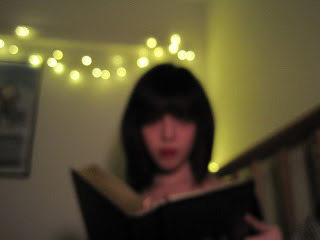 Ariana.
Ariana.Ariana F.
I'm twenty-two years old and a university student in Canada. I'm in my last year of studying English Language and Literature as well as Creative Writing, and I am planning on pursuing my MLIS degree. I'm currently writing a creative writing thesis, a collection of short stories focusing on transformation, folklore, and magic.
I write primarily for a Young Adult audience, and I think the best way to describe my writing is mythpunk *. Fantasy literature has been a part of my life ever since I could choose my own books. I've been published in Cicada magazine, as well as my university's writing zine, and I'm hoping that this is just the beginning of my career. I blog at Wolf in the Fable
*""a subgenre of mythic fiction" in which classical folklore and faerie tales get hyperpoetic postmodern makeovers." Coined by author Catherynne M. Valente
 , the term describes
a brand of speculative fiction which starts in folklore and myth and adds elements of postmodern fantastic techniques: urban fantasy, confessional poetry, non-linear storytelling, linguistic calisthenics, worldbuilding, and academic fantasy.
, the term describes
a brand of speculative fiction which starts in folklore and myth and adds elements of postmodern fantastic techniques: urban fantasy, confessional poetry, non-linear storytelling, linguistic calisthenics, worldbuilding, and academic fantasy. Characterized by baroque multicultural fashion, alternative/ queer sexuality, bizarre retellings of familiar faerie tales, pervasive anxiety, fear of inevitable change, elaborate symbolism and radical reinterpretation, mythpunk is a cross-media movement. Although largely defined through literary works like Andrea Jones's Hook & Jill, Francesca Lia Block's Weetzie Bat series and Catherynne Valente's
The Orphans Tales
, the mythpunk aesthetic occasionally manifests in music (The Decemberists), film (Pan's Labyrinth), jewelry and other media forms.
Characterized by baroque multicultural fashion, alternative/ queer sexuality, bizarre retellings of familiar faerie tales, pervasive anxiety, fear of inevitable change, elaborate symbolism and radical reinterpretation, mythpunk is a cross-media movement. Although largely defined through literary works like Andrea Jones's Hook & Jill, Francesca Lia Block's Weetzie Bat series and Catherynne Valente's
The Orphans Tales
, the mythpunk aesthetic occasionally manifests in music (The Decemberists), film (Pan's Labyrinth), jewelry and other media forms.
Published on January 30, 2012 15:09
January 28, 2012
Shaking to Relax the Writer
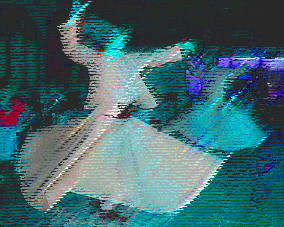
Shaking
Ancientwisdom embodies ecstatic shaking as the oldest medicine. Kalahari Bushman,Quakers, Shakers, Japanese seiki jutsu,Native American shakers of the Pacific Northwest, and many pow-wow dancers useshaking for healing and shamanic experience.
Manytraditions use frenzied ecstasy as a prelude to a deep state of relaxation. Notto be confused with St. Vitus Dance or mass hysteria, remnants of ecstaticshaking remain in divers music and spiritual traditions; jazz, blues, rock androll, and gospel as well as ancient ethnic circle dances, kundalini yoga, andqigong.
Gentleor energetic shaking loosens the joints of the body, breaks up physical andmental stagnation, and opens energy channels. Shaking allows you to let go (andlook very silly) while banishing stiffness and shaking off emotional knots. Bradford Keeney,author of Shaking Medicine ,experienced what he calls enriched intuition from shaking.
HowTo Do It
Start by imagining you're Pinocchio and a kindly Geppetto is pulling yourstrings. Stand, feet apart, eyes closed or almost closed. Soften the knees.Exhale and begin. Try to feel the shaking originating in the belly. Let thebreath deepen. Move and wiggle all your parts as if you had no bones. Shake forat least 5 minutes daily for a few days to see if it works for you.
Shakingcan be a warm-up, a quick break, or a practice in itself. Laraine Herring, in The Writing Warrior , calls shaking an "energeticflush" for the body and "internal meditation" for the mind. She offersinstructions and a YouTube video to introduce writers to the practice ofshaking.
LiterarySide Trip - A famous member the Sufi dervish cult known for ecstatic dance, the 13thcentury poet Rumi, was recently called the most popular poet in America.
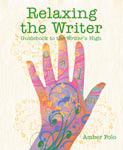 Excerpt from Relaxing the Writer
Shaking and Rocking
Excerpt from Relaxing the Writer
Shaking and Rocking***************************************************** More about Shaking...
Listen to Laraine talk more about shaking on this video -
And a demonstration
Laraine somehow convinced her husband
to demonstrate how to shake -
Published on January 28, 2012 09:35

